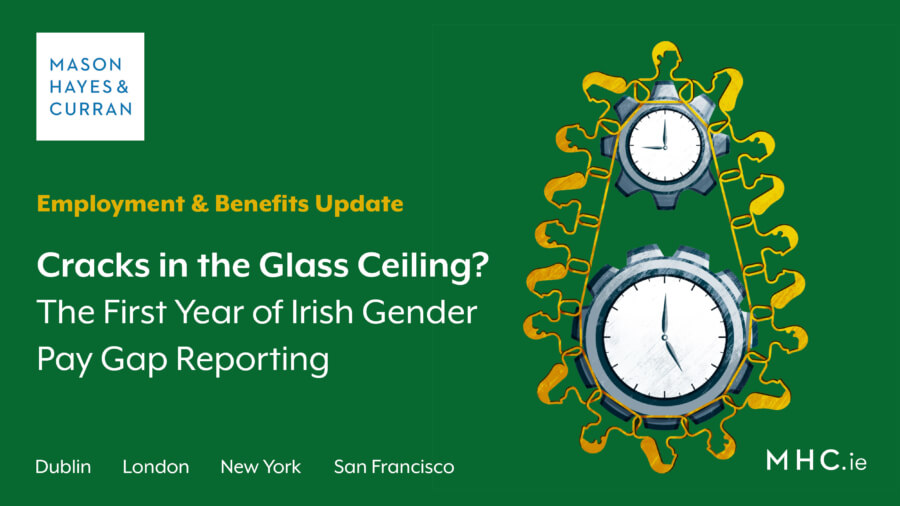
On International Women’s Day 2023, Employment & Benefits partners, Elizabeth Ryan and Melanie Crowley review one of the most significant pieces of legislation to impact Irish women in recent years. They also assess the trends highlighted by the first year of Gender Pay Gap (GPG) reporting in Ireland.
What is Gender Pay Gap reporting?
At the outset, it is important to bear in mind that GPG is not about equal pay. Since 1998, men and women who do the same or like work have had a right to equal pay. GPG is about the disparities in the average hourly pay between men and women. GPG reporting has shone a light on the remuneration practices and the participation (or lack thereof) of women in senior roles. The objective of GPG reporting is for employers to measure their GPG data and to commit to measures to reduce and ultimately eliminate the gender pay gap.
As a quick reminder, for the first time Irish organisations which employed 250+ employees on a “snapshot” date in June 2022, were required to publish a GPG report in December 2022.
Key trends identified
From our review of GPG reports across various sectors, we highlight some of the key trends from the first year of GPG reporting in Ireland
- It was clear that a significant reason for gender pay gap(s), which are in the main, favourable to men, across a variety of organisations was related to the proportion of men employed in senior roles in comparison to women in such roles.
- Where men occupied the majority of senior executive roles in organisations and as a consequence earned higher salaries, this contributed to the gender pay gap of that organisation.
- Bonus payments and share schemes remuneration paid to those in senior roles, (a higher proportion of which were men), significantly increased the average hourly pay gap.
- GPG reports in certain sectors highlighted sectoral divides. For example, men tended to be paid more than women in financial services, law, technology, engineering and construction. There was also a higher proportion of women engaged on A-typical employment arrangements such as part time or temporary workers.
- Employers with large gender pay gaps may find that these results are an impediment to attracting, recruiting and retaining women in their organisations.
- In explaining their reasons behind the GPG gap(s), employers outlined goals and changes in practices to address the gap(s). Many committed to making changes to their recruitment, promotion and training practices.
Conclusion
A key takeaway from the first year of GPG reporting is that it provides very useful data for employers to identify where the gaps exist and to use this information to pick out and analyse the underlying reasons for the gap. Importantly, the data also assists employers to take steps to reduce or eliminate the gap(s) and consider their organisational remuneration practices.
The threshold for reporting remains the same for 2023, i.e., 250+ employees. Employers will be required to take stock and assess whether the proposals they outlined in their 2022 reports to address the gaps have been achieved. From 2024, the threshold for GPG reporting reduces to 150 employees. As more employers come within the scope of GPG reporting it will be interesting to assess whether this legislation brings about meaningful changes to participation of females in senior roles and of remuneration practices.
The Irish Government department with responsibility for GPG, the Department of Children, Equality, Disability, Integration and Youth, has not yet published figures on the outcome of the first year of the GPG reporting cycle. It has indicated that an online portal for employers to upload their GPG reports will be launched this year.
For expert guidance in complying with GPG reporting for 2023, contact a member of our dedicated Gender Pay Gap team or a member of the wider Employment Law & Benefits team.
The content of this article is provided for information purposes only and does not constitute legal or other advice.
Share this:







